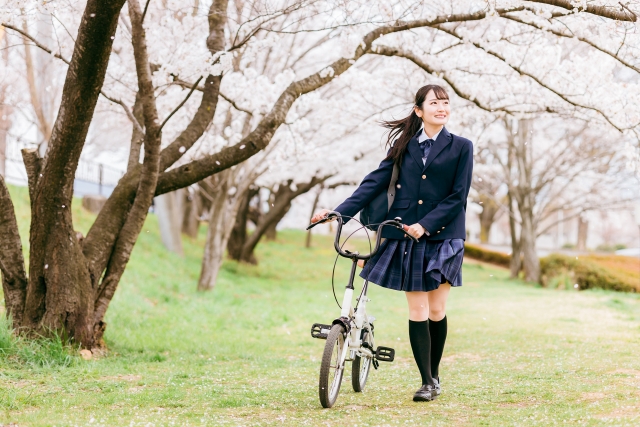
In Japan, it’s common to see students in uniforms from junior high school through high school, especially in private schools and many public schools. But why are uniforms such an integral part of Japanese education? And where can families buy these uniforms? While Japan is well-known for its school uniforms, it’s not the only country that uses them. In fact, uniforms are used worldwide, often for different reasons, ranging from promoting equality to improving school safety. This article explores why uniforms exist in Japan, where to purchase them, and how Japan’s uniform culture compares to other countries.
Why Do Japanese Schools Have Uniforms?
Japanese school uniforms are more than just a dress code—they are deeply tied to the country’s culture and educational philosophy.
- Promoting Equality: One of the key reasons for school uniforms is to minimize visible differences between students. In Japan, uniforms help to create a sense of equality among students, regardless of their family’s social or economic background. By wearing the same clothing, students are less likely to compare appearances, which can reduce bullying or feelings of inferiority.
- Discipline and Focus: Uniforms also promote a sense of discipline and respect for the school environment. Japanese schools emphasize group harmony and collective responsibility. By wearing uniforms, students are encouraged to focus on their studies rather than fashion, helping maintain a structured and focused learning environment.
- Cultural Identity and Tradition: The use of uniforms in Japanese schools has a long history, dating back to the late 19th century. The traditional sailor-style uniform for girls and the military-inspired “gakuran” for boys are iconic symbols of Japanese student life. Uniforms are not just functional; they are part of Japan’s cultural identity, representing the transition from childhood to adulthood.
Where to Buy School Uniforms in Japan
For students entering schools with a uniform requirement, parents typically purchase the uniforms from designated stores or directly through the school. Here are some common places where uniforms can be bought:
- School-Designated Stores: Many schools have partnerships with local clothing shops or uniform manufacturers where parents can purchase the specific uniform required for that school. These shops often sell everything from blazers and skirts to shoes and accessories like ties and ribbons.
- Department Stores: Large department stores in Japan, such as Takashimaya or Isetan, often have a section dedicated to school uniforms, particularly during the start of the school year. Parents can find a range of sizes and styles, depending on the school’s requirements.
- Second-Hand Stores: For families looking for more affordable options, there are second-hand uniform stores where gently used uniforms can be purchased. Some schools also organize uniform donation programs where older students pass down their uniforms to new students.
How Does Japan Compare to Other Countries?
While Japan is famous for its school uniforms, it is not alone in using them. Many other countries also have uniform policies, each with its own unique reasons and impacts.
- United Kingdom: Like Japan, school uniforms are widely used in the UK. The tradition of wearing uniforms in British schools dates back centuries and is seen as a way to promote discipline and unity among students. British uniforms, typically blazers, ties, and skirts or trousers, are also meant to foster school pride and a sense of belonging.
- United States: In the U.S., school uniforms are not as common but have been introduced in certain regions, particularly in urban areas. A notable example is when schools in low-income or high-crime areas implemented uniforms as a way to reduce gang-related violence and school crime. Studies have shown that in some cases, the introduction of uniforms helped reduce crime both inside and outside of schools. A typical uniform in these schools might consist of a polo shirt and khaki pants or skirts.
- Other Countries: Countries like Australia, South Africa, and many nations in Southeast Asia also have school uniform policies. These uniforms often serve similar purposes as in Japan, such as promoting equality, reducing peer pressure, and creating a more disciplined learning environment.
An Interesting Example of the Impact of Uniforms
There have been several studies on the positive effects of school uniforms around the world. One notable case is from a school district in the U.S. that introduced uniforms in a troubled area with high crime rates. The new dress code required students to wear simple polo shirts and beige pants or skirts. Not only did school crime decrease, but the overall crime rate in the surrounding community also saw a decline. This example shows how uniforms can positively influence student behavior and community well-being, supporting the idea that uniforms foster a safer, more focused school environment.
Uniforms as a Symbol of Equality and Discipline
In Japan, school uniforms play a crucial role in maintaining equality, discipline, and cultural traditions within the educational system. They are not only a practical way to unify students but also a symbol of respect and focus on learning. While Japan’s uniforms are iconic, they share similarities with uniform policies in other countries, each aimed at improving the school experience in different ways. For foreigners living in Japan, understanding the cultural importance of uniforms can provide a deeper appreciation for this unique aspect of Japanese student life.







